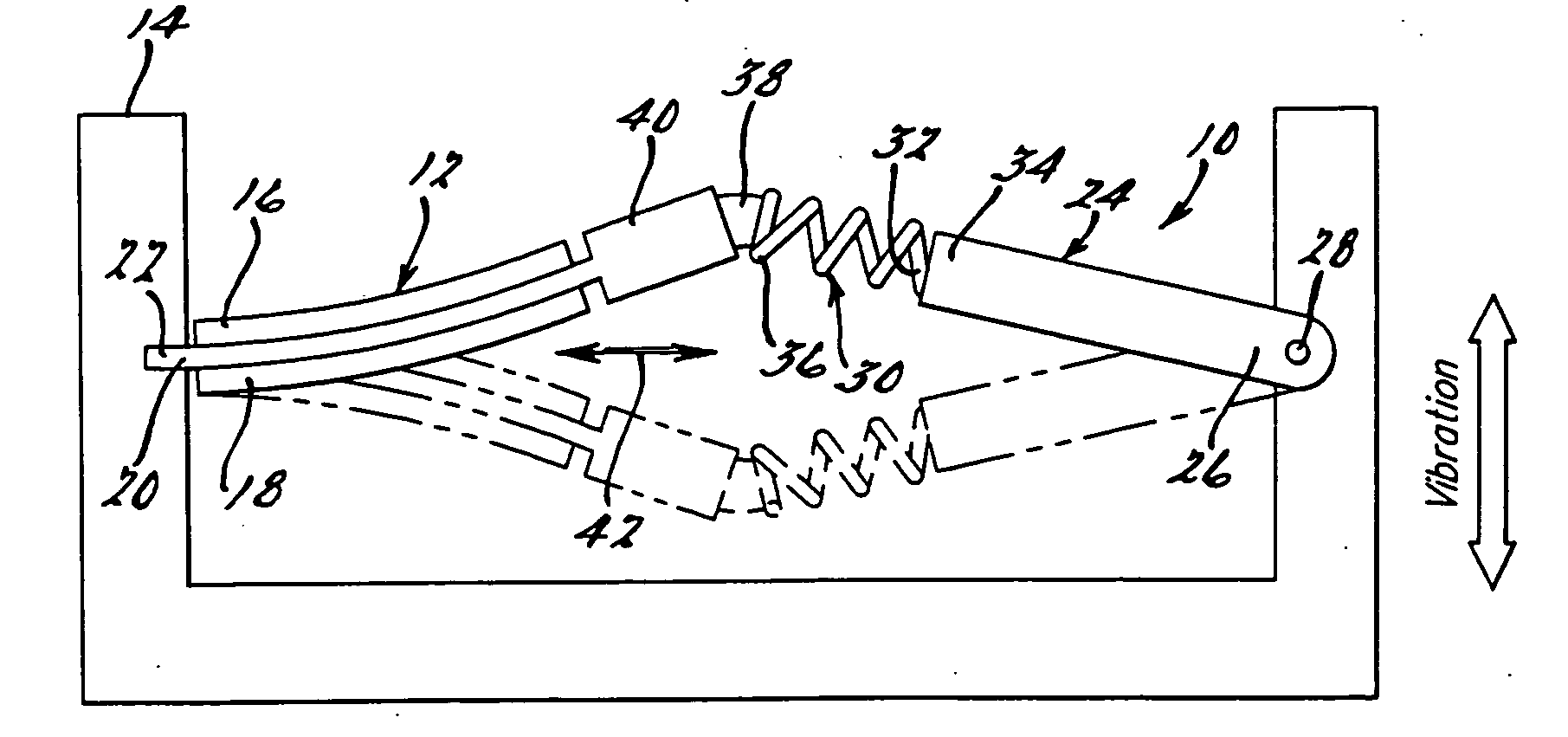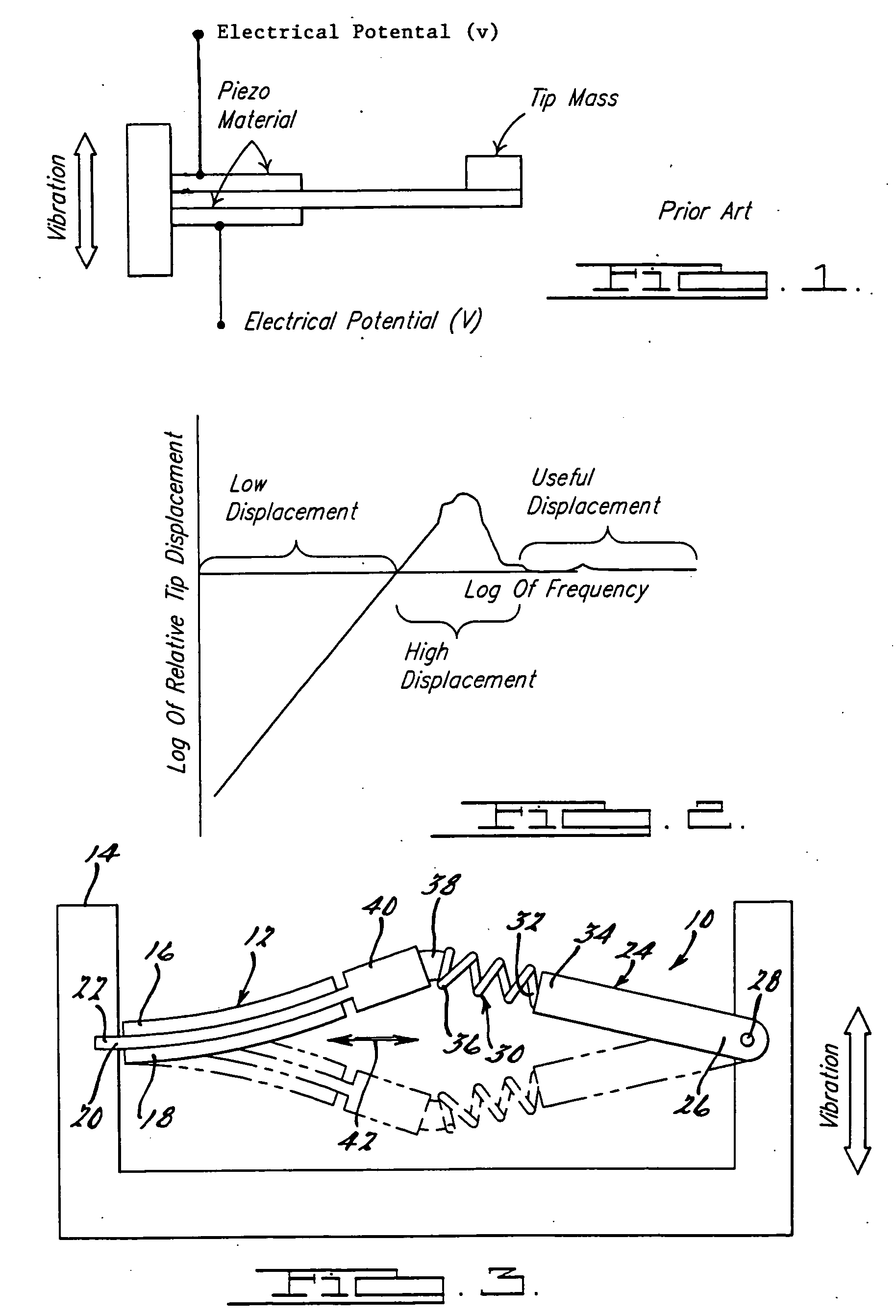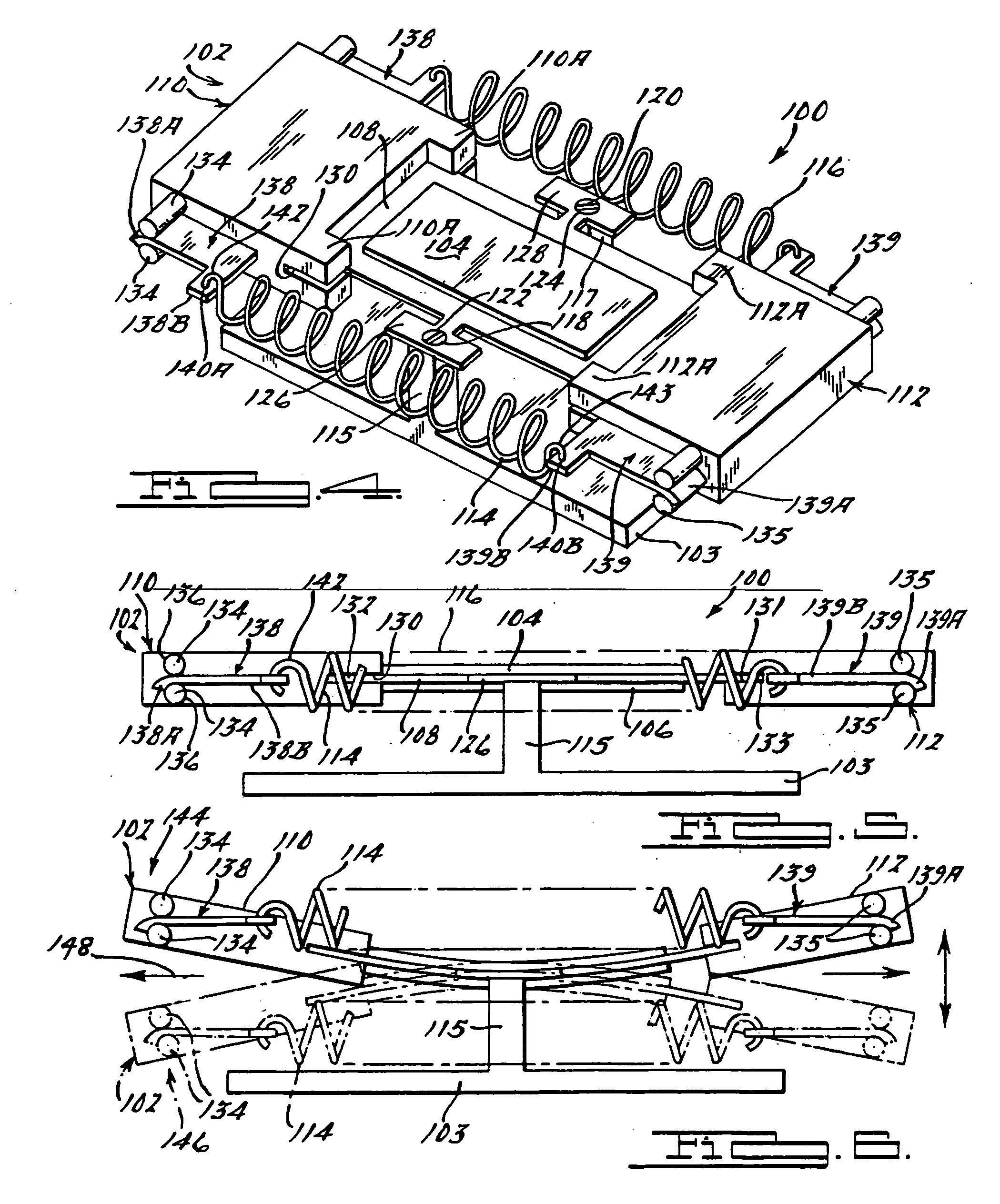Enhanced amplitude piezoelectric motor apparatus and method
a piezoelectric motor and amplitude technology, applied in piezoelectric/electrostrictive/magnetostrictive devices, piezoelectric/electrostriction/magnetostriction machines, electrical apparatus, etc., can solve the problems of vibration energy, increased voltage potential between two points of materials, and stress on the piezo material, so as to increase the mass of the beam and increase the amplitude of the beam. , the effect of displacemen
- Summary
- Abstract
- Description
- Claims
- Application Information
AI Technical Summary
Benefits of technology
Problems solved by technology
Method used
Image
Examples
Embodiment Construction
[0032] The following description of the various embodiment(s) is merely exemplary in nature and is in no way intended to limit the present disclosure or its application.
[0033] Referring to FIG. 3, an apparatus 10 in accordance with a preferred embodiment of the present invention is shown. The apparatus is used for enabling low frequency vibration energy harvesting (VEH) through the use of a piezo flexure 12 which is supported fixedly from a vibrating structure 14. The piezo flexure essentially forms a beam-like structure, and in one preferred form comprises a piezo bimorph flexure. The piezo flexure 12 includes piezo electric layers 16 and 18 formed on opposite sides of a flexible supporting substrate 20. The substrate 20 includes an end 22 which is fixedly coupled to the structure 14. The substrate 20 can be plastic, metal or any other flexible material that allows the piezo electric layers 16 and 18 to be bonded thereto. In lieu of piezoelectric layers, magnetostrictive or electr...
PUM
 Login to View More
Login to View More Abstract
Description
Claims
Application Information
 Login to View More
Login to View More - R&D
- Intellectual Property
- Life Sciences
- Materials
- Tech Scout
- Unparalleled Data Quality
- Higher Quality Content
- 60% Fewer Hallucinations
Browse by: Latest US Patents, China's latest patents, Technical Efficacy Thesaurus, Application Domain, Technology Topic, Popular Technical Reports.
© 2025 PatSnap. All rights reserved.Legal|Privacy policy|Modern Slavery Act Transparency Statement|Sitemap|About US| Contact US: help@patsnap.com



